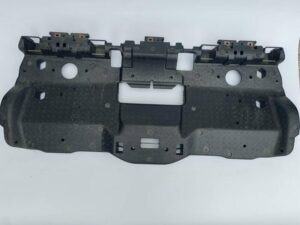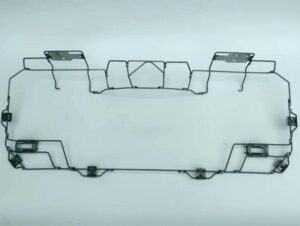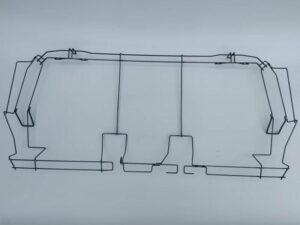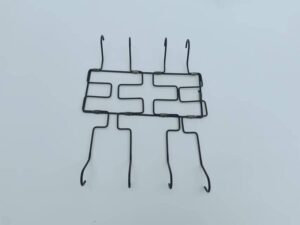
I've always been on the lookout for smarter, cost-effective methods to create prototypes of metal pipe fittings quickly.
By utilizing woodworking engraving machines to process Bakelite, you can reduce costs, shorten development cycles, and achieve high precision in metal pipe fitting prototypes.
Here's how I've managed to reduce costs without compromising quality.
How can rapid prototyping decrease costs?
I've found that rapid prototyping 1 significantly slashes costs and speeds up development.
Rapid prototyping decreases costs 2 by reducing material waste, speeding up design iterations, and allowing for quick adjustments without expensive tooling changes.

One of the biggest revelations in my journey has been the power of rapid prototyping 3. By embracing this approach, I've been able to test designs quickly and make necessary tweaks without the hefty costs associated with traditional methods.
For instance, instead of committing to expensive metal prototypes, I've started using Bakelite processed with woodworking engraving machines 4. This method not only reduces costs but also cuts down the development cycle significantly. I recall a project where we needed to adjust the design of a metal pipe fitting multiple times. Using traditional metalworking would have been time-consuming and costly. Instead, we opted for rapid prototyping with Bakelite, and we were able to iterate swiftly.
Moreover, rapid prototyping minimizes material waste. Since we're working with less expensive materials and precise machinery, there's less room for costly errors. It also allows for better communication with clients. Providing them with a tangible prototype early in the process helps in getting valuable feedback, which can prevent costly revisions later on.
I've found resources like efficient prototyping techniques incredibly helpful in refining this process. Adopting these methods has been instrumental in keeping costs low while maintaining high-quality outputs.
How can product design reduce costs in the manufacturing process?
Thoughtful product design has a massive impact on manufacturing costs.
Optimizing product design reduces manufacturing costs by simplifying components, using standard materials, and minimizing complex processes.

In my experience, investing time in smart product design pays off immensely. By simplifying components and opting for standard sizes and materials, I've managed to reduce not only the cost but also the complexity of manufacturing.
For example, in one project, we redesigned a pipe fitting to eliminate unnecessary bends, which allowed us to use simpler tooling and reduced the processing time. This change alone saved a significant amount on production costs.
Another strategy I've employed is collaborating closely with the design team to ensure that the designs are manufacturing-friendly. This means avoiding intricate details that require specialized machinery or processes, which can drive up costs.
Also, considering the material choices is crucial. Opting for readily available materials that are easy to work with can lower expenses. I've found that materials like Bakelite are not only cost-effective but also provide the precision needed for prototypes.
Here's a quick comparison:
| Design Approach | Cost Implications |
|---|---|
| Complex components | Higher tooling and processing costs |
| Simplified components | Lower costs, easier manufacturing |
By focusing on these design principles, I've been able to streamline production and keep costs in check. Resources like cost-effective design strategies have been invaluable in this process.
How does prototyping reduce costs?
Prototyping isn't just about testing ideas; it's a cost-saving tool.
Prototyping reduces costs by identifying design flaws early, preventing expensive mistakes, and refining the product before full-scale production.

I can't stress enough how prototyping has saved me from costly errors down the line. By creating a prototype, we can spot potential issues that aren't apparent in the design phase. I remember a time when a minor misalignment in a pipe fitting design was caught during prototyping. Had this gone unnoticed until production, it would have resulted in significant waste and rework.
Moreover, prototyping allows for testing different materials and methods. By experimenting with Bakelite prototypes, I've been able to assess whether a design would hold up without investing in expensive metals upfront.
Additionally, involving clients in the prototyping phase can lead to valuable feedback. This collaborative approach ensures that the final product meets expectations, reducing the risk of costly revisions.
Incorporating tools like 3D printing technologies can further enhance the prototyping process. While we had issues with 3D printing in terms of precision and durability, combining it with other methods has provided a balanced solution.
By making prototyping an integral part of the development process, I've found that overall costs decrease, and the quality of the final product improves.
What is the process of cost reduction during the manufacturing phase of an existing product?
Reducing costs doesn't stop after design; manufacturing phases offer savings too.
Cost reduction during manufacturing involves streamlining processes, adopting efficient technologies, and continuous improvement to eliminate waste and increase productivity.

Even after a product is designed and prototyped, there's room to cut costs during manufacturing. I've focused on optimizing our production lines by incorporating technologies like laser tube cutting and spot welding, which increase efficiency.
For instance, by upgrading to electric welding methods, we've reduced energy consumption and improved weld quality, leading to fewer defects and reworks. Implementing a strong R&D approach and advanced digital systems has also allowed us to monitor production closely and identify areas for improvement.
Continuous training of staff and encouraging a culture of efficiency have contributed to cost savings as well. For example, setting up regular meetings to discuss process improvements has led to innovative ideas from team members.
Here's a summary:
| Cost Reduction Strategy | Benefit |
|---|---|
| Streamlining processes | Increased efficiency |
| Adopting efficient tech | Reduced waste and defects |
| Continuous improvement | Ongoing cost savings |
By focusing on these areas, I've managed to reduce costs without sacrificing quality, which is crucial for maintaining competitive pricing in the market.
Conclusion
By rethinking our approach, we've made prototype manufacturing more affordable and efficient.
-
Adding a link to "rapid prototyping" helps readers quickly understand this technique, which is fundamental to the article’s main ideas on cost reduction and faster development cycles. ↩
-
Linking to a resource on cost-saving benefits of rapid prototyping provides more context on the specific ways this approach is advantageous, aligning with the article’s focus on efficiency and material savings. ↩
-
This link will provide readers with context on how rapid prototyping allows for faster iterations, reducing both the time and cost associated with traditional manufacturing methods. ↩
-
Linking here offers readers insight into alternative materials like Bakelite in prototyping, explaining why Bakelite is efficient and cost-effective for prototyping complex designs without committing to metal. ↩